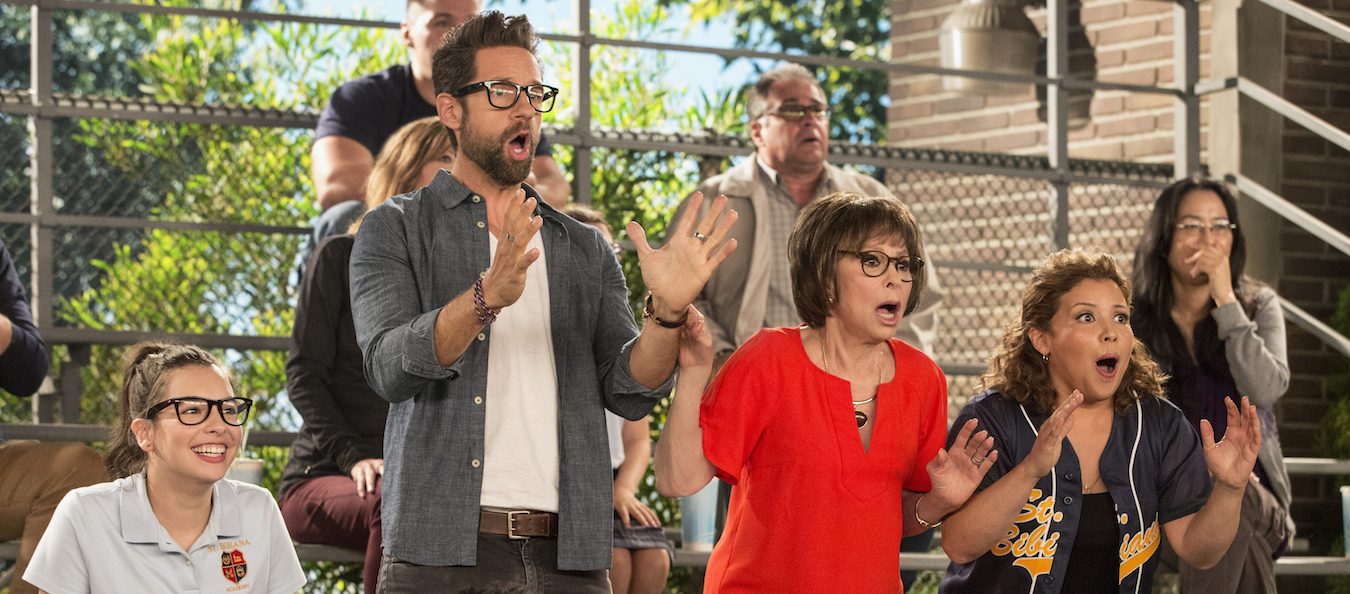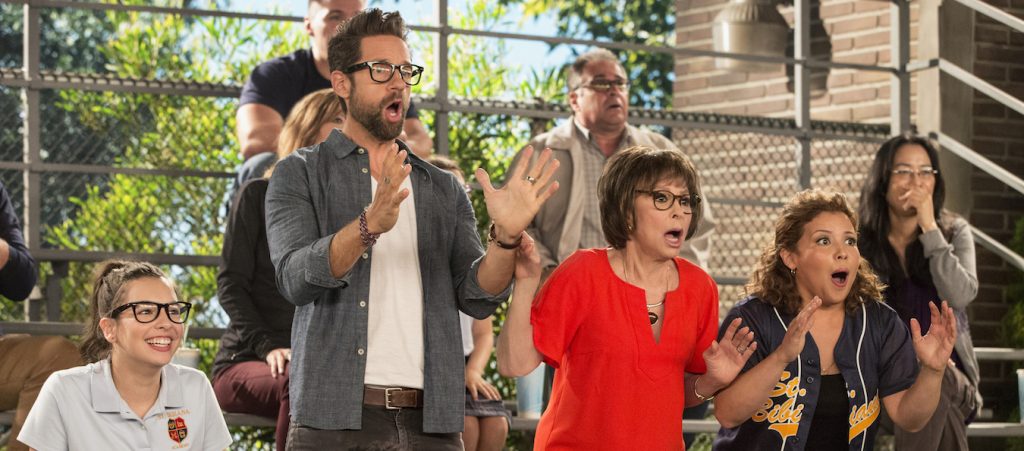For the fifth year in a row, the folks responsible for the UCLA Hollywood Diversity Report are here to offer solid numbers to back up the still paltry state of diversity on our screens. True to its subtitle, “Five Years of Progress and Missed Opportunities,” the report suggests that while great strides have been made both in front and behind the camera in the past few years, there has been no tectonic shift in the industry. The gains have been gradual, encouraging even, but the overall picture remains the same: minorities are still underrepresented, women are still not working on par with their male counterparts. As Hollywood is still grappling with the fallout from #OscarSoWhite and now the current #MeToo and #TimesUp movements, these statistics are helpful in paving the way for a brighter future.
After looking at 200 theatrical film releases in 2016 and 1,251 broadcast, cable and digital platform television shows from the 2015-2016 season, the report’s findings are unequivocal. In chart after chart you see that, as they write, “global box office and television ratings, on average, are highest for films and television shows with relatively diverse casts. Indeed, a consideration of the top 10 films and television shows underscores how important diverse audiences have become as drivers of box office and ratings.” Can we please carve this in some sort of monument somewhere in Los Angeles where it can be seen by every Hollywood executive driving to their next pitch meeting in hopes they finally start acting on it?
You can read the report in full online, but we’ve gone ahead and singled out five findings that should rile you up enough to make sure the numbers improve every year from here on out.
In 2016, Latino actors played only 2.7% of roles in the top movies of the year

File this one under “Tell us something we don’t already know.” At this point, we are all very much aware of the way minority representation is nowhere near where it needs to be, but to have numbers that back that up is very helpful. Even more appalling and unsurprising: “Whites were overrepresented among all top film roles in 2016, claiming 78.1 percent of the roles but constituting just 61.3 percent of the U.S. population.” In fact, people of color would have to triple their 2016 share to reach proportionate representation. Oh, and television is only slightly better. People of color may have quadrupled (!) their share of broadcast scripted leads over the course of the last five years the report has tallied such numbers, but they would still need to double that double in turn to reach proportionate representation.
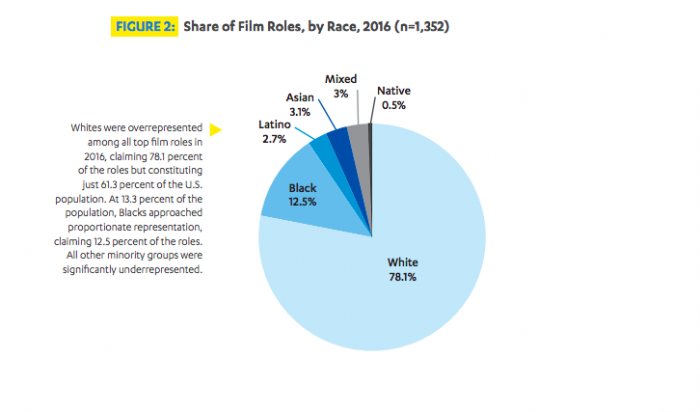
Latino representation on TV is remarkably gender-equal, but we're still underrepresented in general
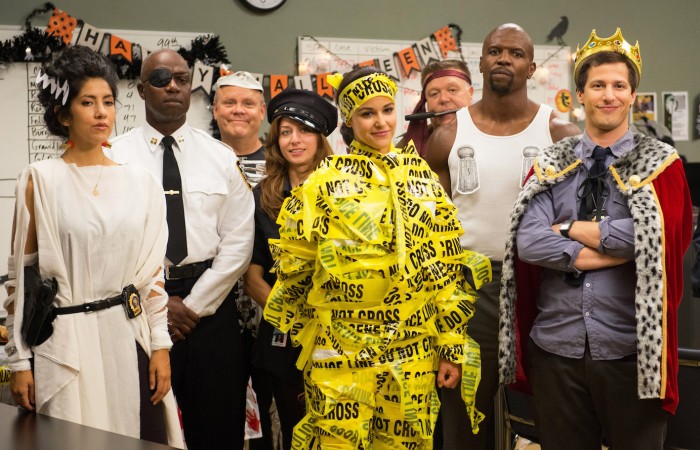
In addition to tracking racial disparity in film and TV, the UCLA report breaks down all of its findings by gender. Some statistics remain as dispiriting as ever (“less than 1 out of 10 film directors are female”) even as others suggest things are moving in the right direction (“women posted gains in all the key employment arenas since the previous report, with the exception of four—film directors, broadcast scripted show leads, cable scripted show creators, and broadcast scripted show creators”). When breaking down gender disparity in broadcast and cable television, the report found women tended to be vastly underrepresented, with white and black women trailing their male counterparts. Not so when it came to Latinos. In fact, while the overall numbers were paltry (really, only 20 roles went to Latin men in broadcast shows and only 31 on cable series?) Latinas stood their ground, accounting for 26 roles on broadcast and 28 on cable. Small victories, for sure, but worth celebrating.
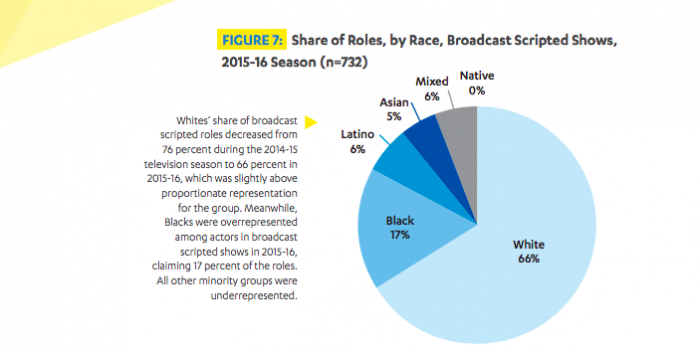
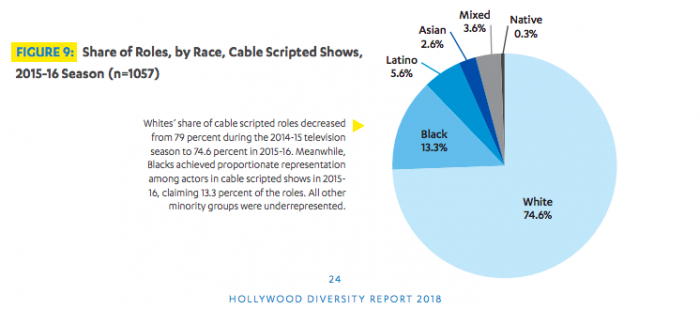
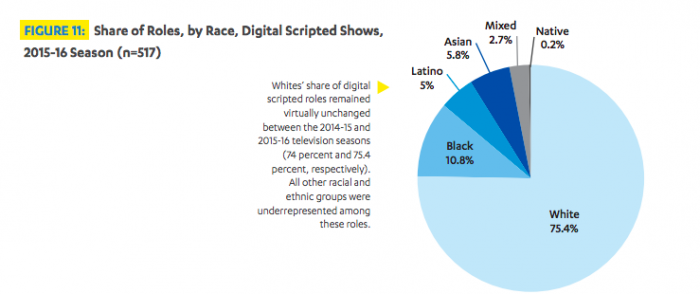
The less minorities in the cast, the less money movies made overseas.

The once-accepted truism that international audiences just wouldn’t accept movies with diverse casts that mirrored America’s own population is proving to be an easily-debunked myth. If there’s one takeaway from this year’s report is that projects that casts that are overwhelmingly just do not drive box office numbers the way they might have before. Movies with casts that were 20% minority or less made up a majority of all movies in 2016 and had the lowest global box office. But that those films continue to be produced in such disproportionate numbers suggests that Hollywood executives remain oblivious to these types of findings. Truly, one need only look at the explosive box office numbers posted by Black Panther to see a bankable way forward that doesn’t (just) depend on white stories and white filmmakers.
Films with Black and Latino leads were released in the fewest international markets in 2016
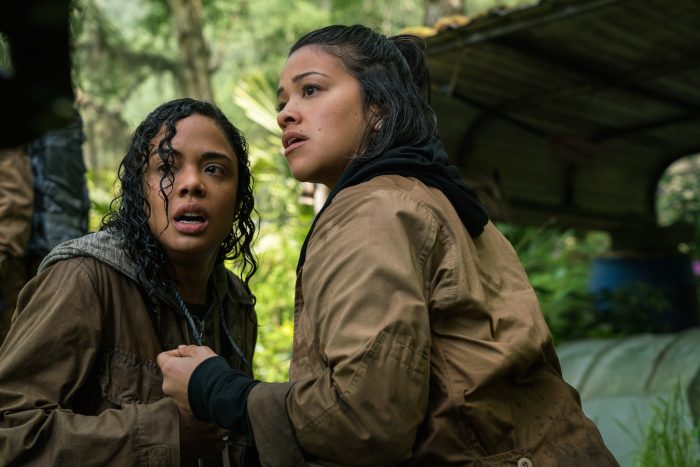
You read that right. Even after a film with a Black or Latino lead gets greenlit and produced—which can be an uphill battle in itself—these films are rarely given the chance to succeed abroad. Audiences in the U.S. this week can see this in action: Alex Garland’s sci-fi thriller Annihilation, which stars both Tessa Thompson and Gina Rodriguez, is not being released in theaters abroad. Netflix bought its worldwide distribution so while subscribers around the world can stream the flick, there won’t be any global box office returns to even quantify the film’s performance for next year’s UCLA report.
Latino households enjoy watching shows with minority ensemble casts

There is one thing that the top 10 lists of 2015-16 scripted shows among Latino households, for cable and broadcast respectively, have in common: they each feature a six shows whose casts are at least 21% minority. Empire tops the list on the broadcast side while The Walking Dead sits atop the cable one. Other shows with comparable ensemble casts that reign supreme in Latino households are Shonda Rimes’ full TGIT lineup (Grey’s Anatomy, How to Get Away with Murder, Scandal), Jennifer Lopez’s Shades of Blue and the O.J. Simpson-themed American Crime Story. The lesson remains the same: in order to reach this demographic, you’re more likely to succeed when pitching and producing shows that don’t only feature white casts.



